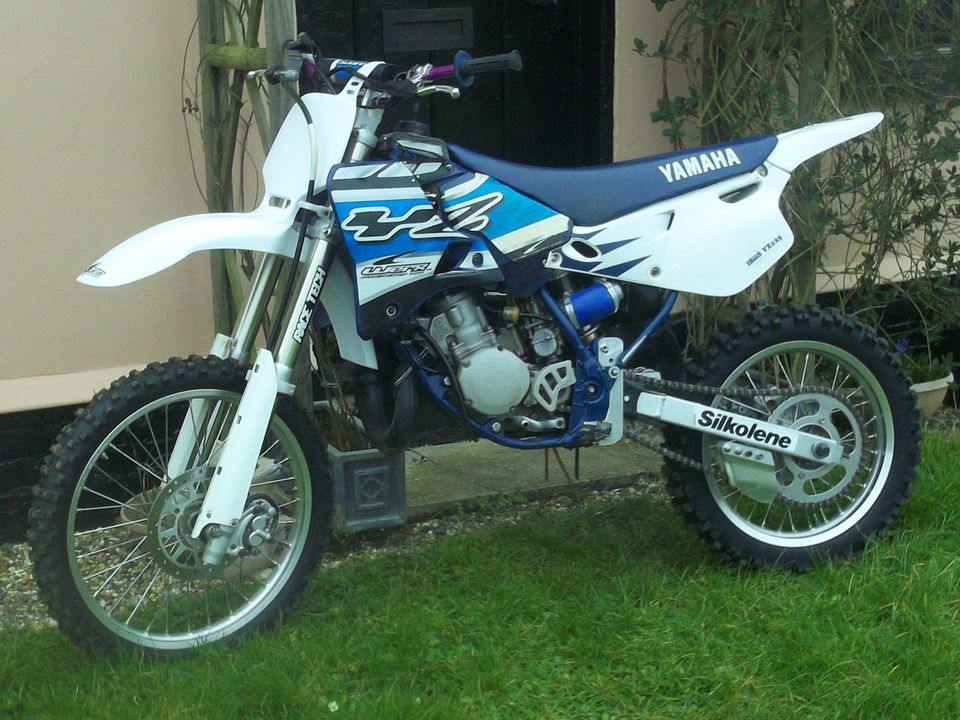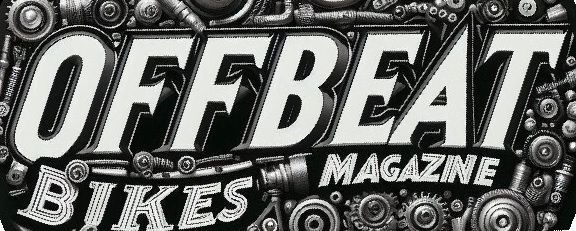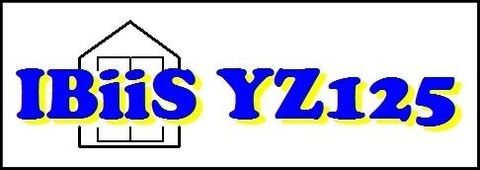
The YZ125 / YZ80 Hybrid. Not very pretty to look at, but it is quite effective. There are few photos of this build, and it's so long ago since I built it that I've probably forgotten most of the headaches experienced during the build, but here is what I can remember.
The bike is a combination of big wheel 1997 YZ80 chassis and 1996 YZ125 engine. It was built because my legs are too short for comfort for a full size MX bike. I rode standard, early 1990s YZ125s for many years, but struggled with their physical size and peaky power delivery.

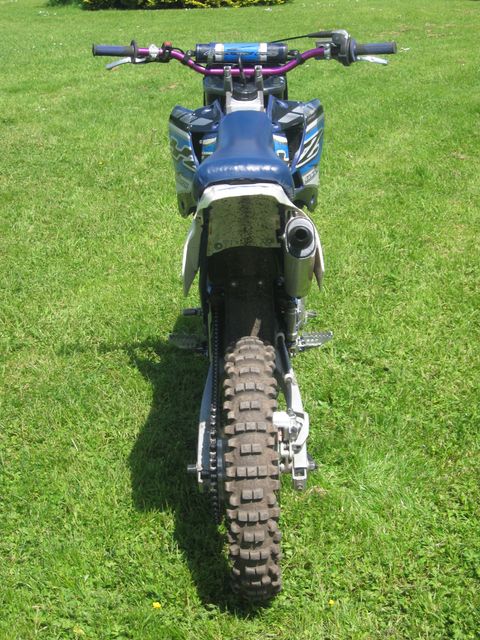
I moved to a YZ250, which didn't solve the physical size problem, but did give me a nice broad spread of power. I liked that very much, but still wanted a bike that was more my 'size'.
This prompted downsizing to a big wheel YZ80, overbored to 100cc by Stan Stephens. At last a bike that was more my size, but now a bit lacking in oomph!
And, so the hybrid idea was born. The later 90s Yz125s were renowned for having engines with a pretty good spread of power, was it possible to fit one in a YZ80 chassis?
The short answer to that question is yes, but it takes a bit of effort, and it is a tight fit. For a start, the boss at the back of the YZ125 crankcases (that fits into the swingarm) is bigger than the corresponding gap in the YZ80 swingarm. Dismantling the engine showed that it was possible to machine this down (and sleeve it to suit the smaller diameter swingarm bolt) but the engine also needed to be offset in the frame to allow the chain to run without fouling the frame. So the engine is offset to the right (when viewed from behind) as far as possible. Even that was not quite enough to get the chain run correct, and so the inside of the frame on the left has been scalloped away and extra bracing added in place. There is also a large aluminium wear plate fitted on the left, just to keep the flappy chain from grinding away the frame.
With the engine now fixed at the back, front engine mounts could be fabricated and welded into place, and when this was done, it was time to get the YZ125 exhaust to fit. This required extensive remodeling, mostly to get it to tuck in tighter to the smaller chassis. It was achieved by cutting a wedge shape out of the inside (where I needed more curve) and a slit on the outside, then bending the pipe to the required angle and welding up the gaps until it all fitted into place.
The little 80cc engine only required one radiator for cooling duties, but the 125 had two, and if Yamaha had deemed it necessary to have two, then my bike must also have two.
Due to a lack of space anywhere else, these had to be mounted higher up than they would have been on the standard bike, and with nowhere else for the link hose between the two to go, this ended up going in front of the frame's main down tube. I was worried about this, as I felt it might be vulnerable to damage, but so far, it's been no problem.
The engine is a tight fit in the frame, which meant there was not even enough room for the standard spark plug and plug cap to fit. An iridium plug turns out to be physically smaller, and that along with the smallest plug cap I could find meant that I could have sparks without having to do frame modifications.
Next job was to get the carburetor to fit. Again I wanted to use the standard 125 part and it fouled the left hand frame rail. I should, perhaps have mentioned at the start, that for this project I wanted to keep frame changes to a minimum as I wasn't sure that my welding would be up to scratch. So everything had to be modified to fit the space available. Airbox to carburetor connection is probably the worst part of this bike design wise. Neither of the rubber airboots for the 80 or 125 could be adapted to fit the space available. The final solution was to machine the mouth of the carb into a D shape to clear the frame, and make up a steel connector to match this D shape at one end, but round at the other to connect to a length of Samco air hose. This hose then connected to a sheet steel fabricated airboot that mated with the airbox. Everything had to be made of steel rather than aluminium as I didn't (and still don't!) have the equipment to weld ally very well.
The fuel tank was the next problem! There was no way either of the standard Yamaha tanks were going to fit, and you just can't cut, shut, modify and weld a plastic tank like you can a metal one. In the end I chose to modify the 125's tank. This way I would (hopefully) still have mounting points for the rad shrouds.
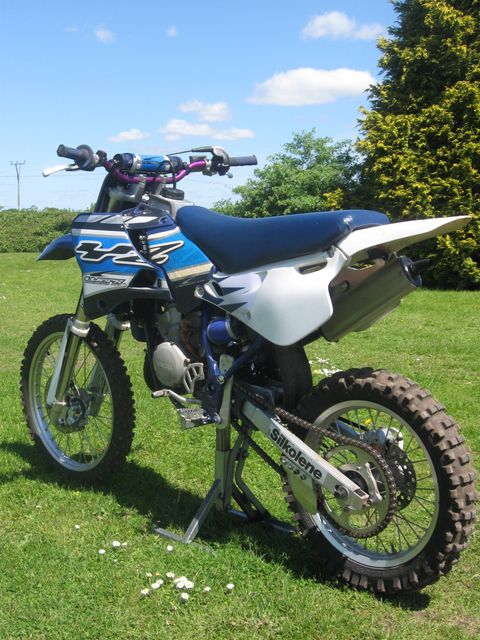
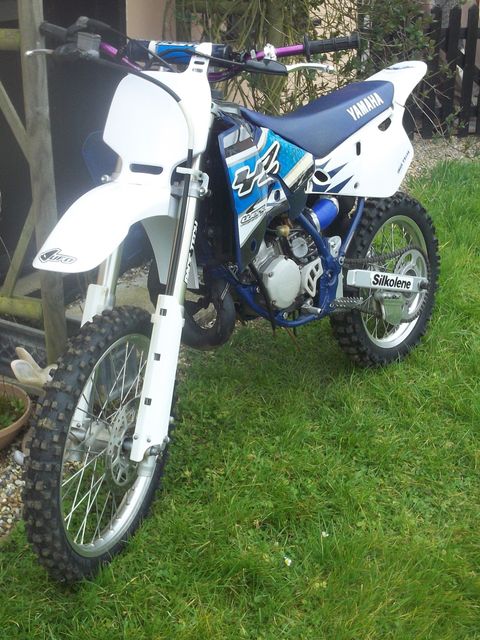
Tank was ruthlessly cut about until it fitted. This left a plastic tank with lots of holes in it! I solved this by making an aluminium tank insert that slipped inside the remains of the plastic tank. This was welded up using a MIG welder fitted with aluminium wire and appropriate shielding gas. It wasn't a neat job, and the welds were also smeared with a generous application of epoxy resin to ensure no leakage occurred. Once slipped inside the plastic tank, any gaps between that and the aluminium one were filled with expanding foam.
Chain run required that wider rubber wear pads were needed for the swingarm and bottom frame rail. I made patterns for these, used plaster of paris to make moulds from the patterns, and then cast the finished product using Flexane rubber compound. Chain run also required the rear sprocket to be spaced out from the hub. Spacers were made from used sprockets, and a 520 sprocket blank machined to suit the YZ80's rear hub bolt pattern.
Last job was to get all the plastics back on. Mudguards were just fine, but side panels needed to be trimmed to fit, and in the case of the rad shrouds, a little bit of cut and shut was also required to make it fit.
Since the initial build, lots of time was spent optimising the jetting to get it to run cleanly through the whole rev range, although it didn't run too badly when it was first ridden on standard jetting. A surprise really, given the modifications undertaken to the exhaust, carb, airboot etc. And the fact that it was breathing through the much smaller YZ80 airbox and filter.
It has also gained a standard Yamaha seat cover, a new, white front mudguard and number plate, some handlebar risers and some new tyres. Other than that, it's just been ridden.
